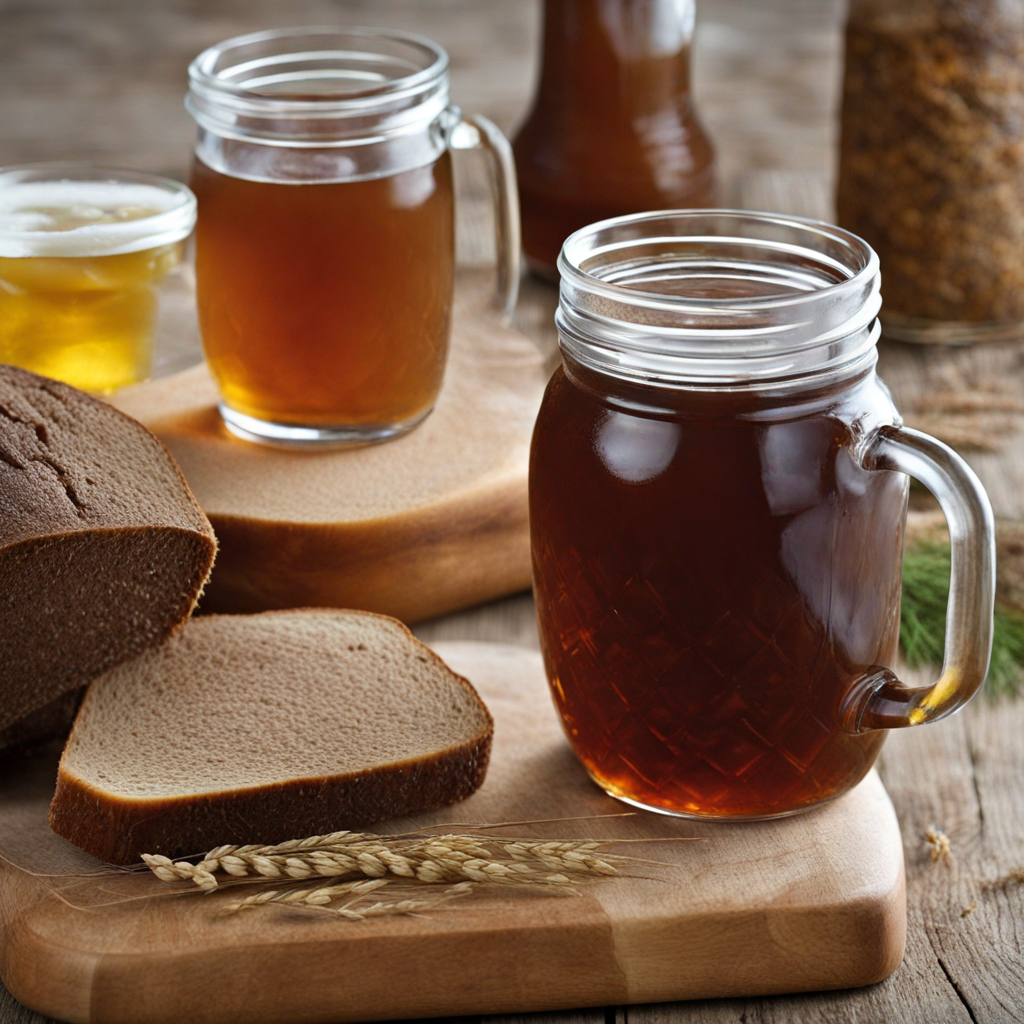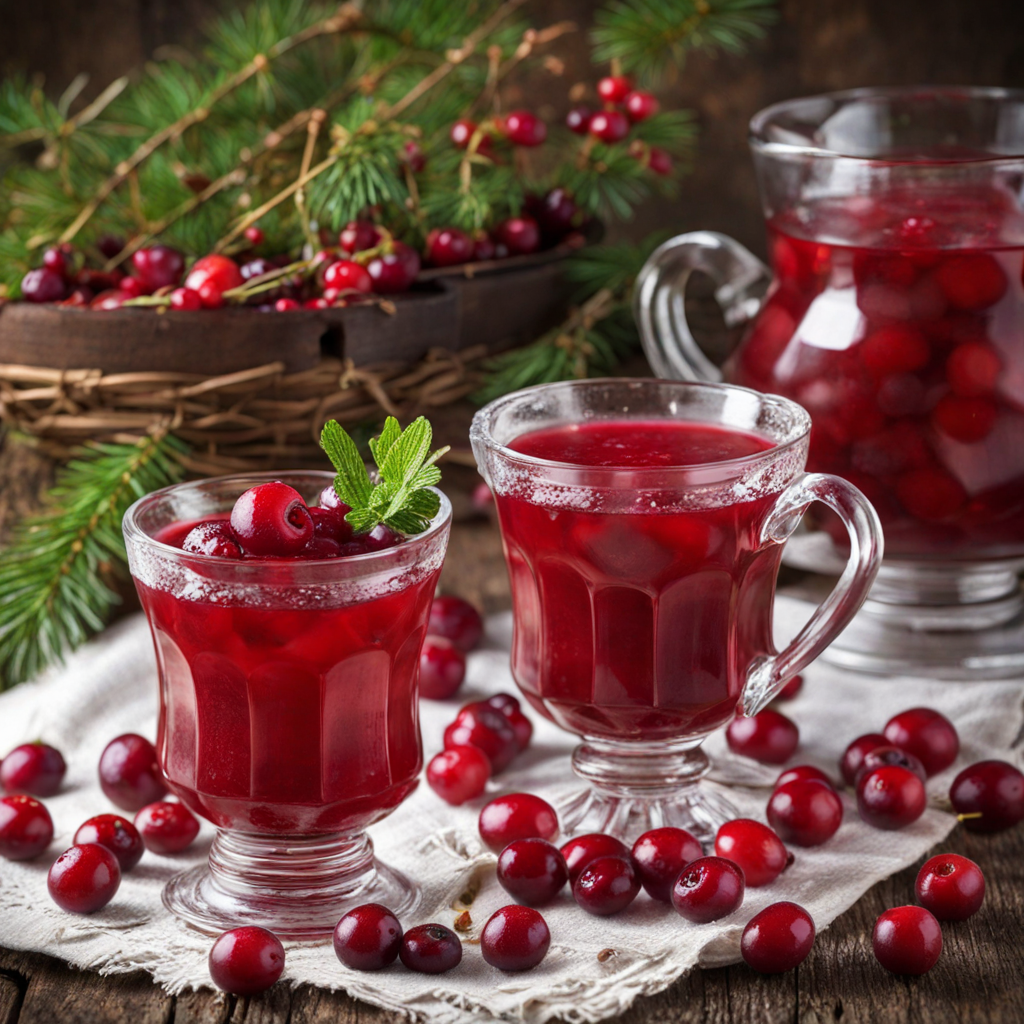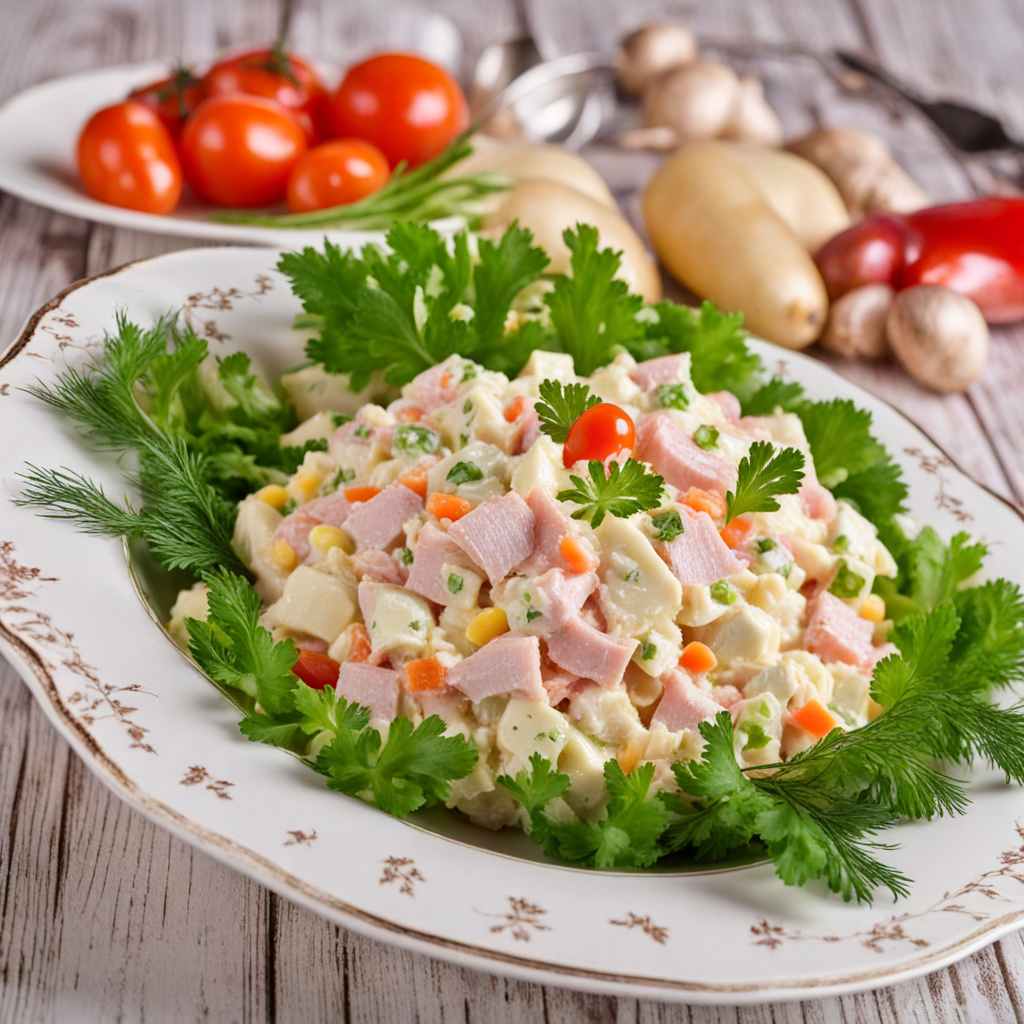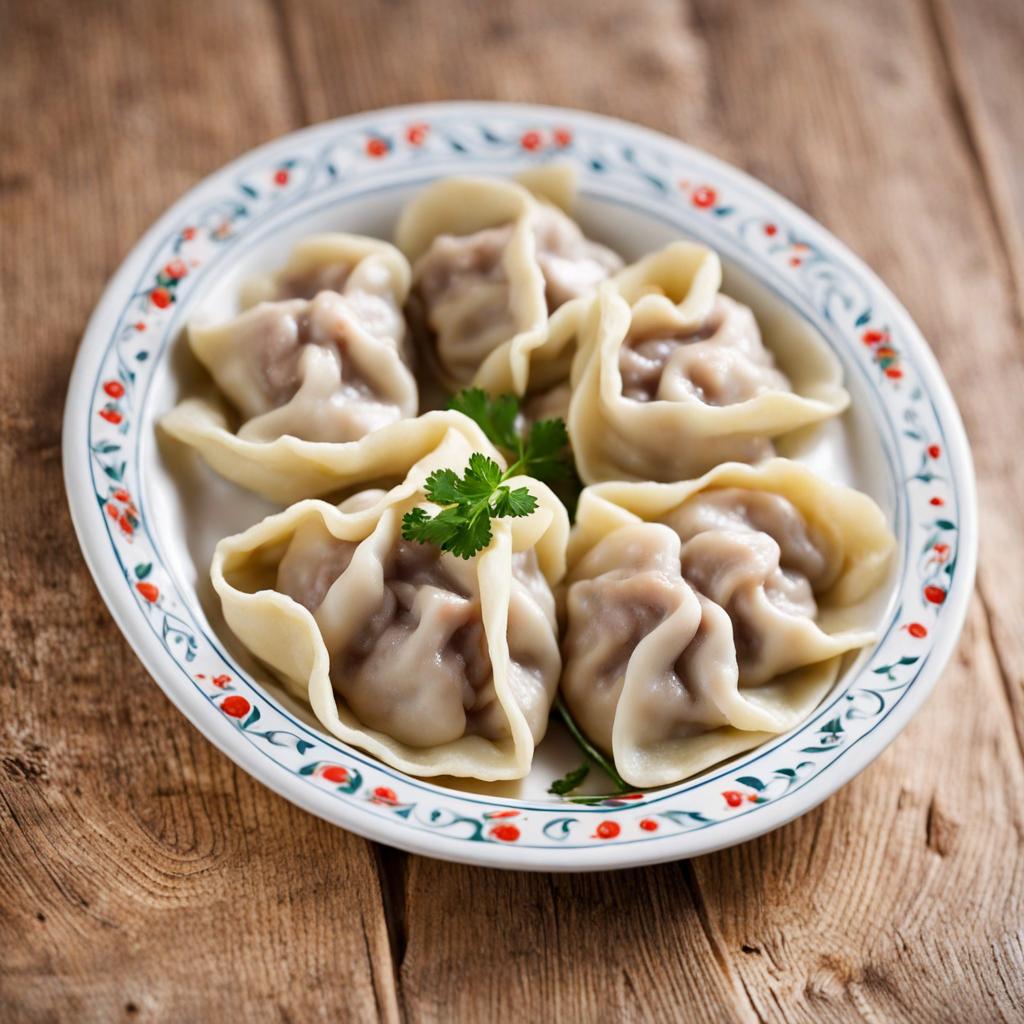Kvass
Kvass is a traditional Russian beverage that offers a unique taste experience, often described as a cross between bread and beer. Made primarily from fermented rye bread, Kvass boasts a slightly effervescent quality, making it refreshing yet complex. Its flavor profile is mildly sweet and tangy, with hints of caramel and malt, thanks to the natural fermentation process. The drink is typically low in alcohol, making it a popular choice for all ages, and can be enjoyed on its own or as a flavorful accompaniment to various dishes. What sets Kvass apart from other beverages is its versatility; it can be infused with a variety of ingredients such as fruits, herbs, or spices, resulting in an array of flavors. Common additions include raisins, mint, and even berries, which enhance the drink's natural sweetness and introduce new aromatic dimensions. In some regions, Kvass is even used as a base for soups or as a marinade, showcasing its adaptability in culinary applications and its deep-rooted cultural significance in Russian cuisine. Drinking Kvass is not just about quenching thirst; it's also about experiencing a slice of Russian heritage. Traditionally consumed during hot summer months or at festive occasions, Kvass is often served chilled and sometimes garnished with fresh herbs or citrus to elevate its refreshing qualities. Whether you are savoring it at a street market in Moscow or enjoying it at home, Kvass invites you to embrace its distinct flavor and discover why it holds a cherished place in the hearts of those who appreciate the rich tapestry of Russian culinary traditions.
How It Became This Dish
Квас: The Quintessential Russian Brew Kвас, a traditional fermented beverage from Russia, holds a unique place in the culinary landscape of Eastern Europe. Often described as a low-alcohol drink made primarily from rye bread, kвас has a history that dates back over a thousand years. Its origins, cultural significance, and evolution over the centuries reflect the rich tapestry of Russian life, making it not just a beverage but a symbol of national identity. Origins and Historical Context The roots of квас can be traced back to the early Slavic tribes, with some historians suggesting that similar fermented beverages may have existed even earlier among nomadic groups. The word "квас" itself comes from the Old Slavic verb "квасити," meaning "to ferment." This indicates that fermentation was a common practice among these early peoples, likely due to the lack of sophisticated preservation methods for food and drink. The earliest references to квас appear in 989 AD, during the reign of Prince Vladimir of Kiev. It is said that the prince was introduced to the beverage during his quest to adopt a state religion. Kвас quickly became popular among the people, particularly as a thirst-quencher for peasants and laborers. It was affordable and easy to make, requiring only basic ingredients: rye bread, water, and a fermenting agent. Cultural Significance As kвас spread throughout Russia, it became more than just a drink; it evolved into an essential part of Russian culture. It was consumed daily, often seen in the hands of peasants and laborers as they toiled in the fields. Its role in the social fabric of life cannot be understated. Kвас was often the centerpiece of gatherings and celebrations, from weddings to festivals, where it was shared among family and friends. In addition to its social importance, квас also played a role in Russian folklore and literature. It was often mentioned in proverbs and songs, symbolizing hospitality and warmth. The famous Russian writer Nikolai Gogol even referenced квас in his works, highlighting its place in everyday life. For many Russians, the taste of квас conjures memories of childhood and home, making it a deeply nostalgic beverage. The Brewing Process The traditional method of making квас involves a simple fermentation process. Bread, particularly rye bread, is dried and then soaked in water. This mixture is combined with sugar and sometimes additional flavorings such as mint, berries, or fruits. Yeast is added to initiate fermentation, which typically lasts for a few days. The result is a slightly effervescent drink that can range in flavor from mildly sweet to tangy, depending on the fermentation time and ingredients used. In rural areas, kвас was often brewed at home, making it a staple of peasant life. Each family would have its unique recipe, passed down through generations. This homebrewing tradition contributed to the drink's local variations and rich diversity. Urbanization, however, brought changes to kвас production. As cities grew in the 19th century, commercial production began to flourish, and kвас became available in shops and markets. Industrialization and Modernization With the advent of industrialization in the 19th century, kвас underwent significant changes. The introduction of modern brewing techniques allowed for mass production, making it more accessible to the general population. Factories began to produce kвас in large quantities, often using standardized recipes that prioritized consistency over individuality. This shift led to the emergence of well-known brands that still exist today, such as "Kvas" by the Russian beverage company "Krasny Oktyabr." The 20th century marked a turning point for квас, particularly during the Soviet era. The government recognized the beverage's cultural significance and promoted it as a national drink, often branding it as a healthier alternative to beer. Kвас was marketed as a drink that could sustain the working class, reinforcing its status as a symbol of Russian identity. During this time, kвас also began to diversify in terms of flavors and ingredients. While traditional recipes remained popular, new variations emerged, incorporating ingredients like honey, herbs, and fruits. The beverage became a staple in school lunchrooms and was commonly served in cafeterias, solidifying its presence in everyday life. Resurgence of Traditional Brewing In the post-Soviet era, the popularity of квас saw a resurgence as people began to seek out traditional and artisanal products. The 1990s and 2000s witnessed a revival of homebrewing culture, with many Russians returning to the roots of квас production. Small-scale brewers and craft distilleries emerged, focusing on quality and authenticity, often using organic grains and traditional fermentation methods. This renaissance has led to a newfound appreciation for the varied flavors and styles of квас. Today, one can find numerous artisanal brands offering a range of kвас types, from classic rye to fruit-infused varieties. Festivals celebrating квас are held across Russia, where locals gather to taste different brews and share stories about their family recipes. Global Influence and Future Prospects In recent years, квас has begun to gain international recognition as a unique and flavorful beverage. It has caught the attention of food enthusiasts and chefs worldwide, who appreciate its complexity and versatility. Some have even experimented with квас in culinary applications, using it as a marinade or a base for dressings. The global interest in fermentation and craft beverages has also contributed to квас's popularity outside Russia. It is increasingly available in specialty stores and online, appealing to those seeking authentic international flavors. As it continues to evolve, квас remains a testament to Russia's rich culinary heritage, embodying the spirit of tradition and community. Conclusion From its humble origins as a peasant drink to its status as a beloved national symbol, квас is much more than a refreshing beverage. It encapsulates the heart of Russian culture, reflecting the values of hospitality, family, and tradition. As it adapts to contemporary tastes while honoring its roots, квас remains a significant and cherished part of Russia's gastronomic history, promising to delight future generations. Whether enjoyed on a hot summer day or as part of a festive gathering, квас continues to be a drink that connects people to their heritage and to one another, celebrating the enduring legacy of this remarkable fermented elixir.
You may like
Discover local flavors from Russia







